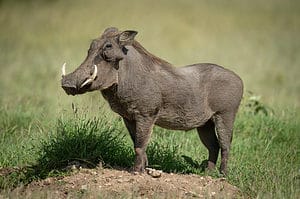Continue reading for our analysis...

A baby warthog accidentally crosses paths with a leopard’s hiding spot. He immediately knows he is in trouble, and takes off, hoping he will be able to outrun the leopard.
The dream of getting off scot-free and being able to outrun this adult leopard is short-lived. In a matter of seconds, the leopard has the baby in his jaws, with no way to escape. The warthog does the only thing he knows how to do and kicks with every bit of his little strength to try and free himself.
This fight is no match for the leopard, as shown in the video below. He lets the baby warthog swing from his locked jaw. Enjoying his easy capture, the leopard gazes around, seeming smug over his effortless hunt.
Suddenly, he locks eyes with the father warthog, and the leopard immediately understands that he is in danger. Without a second thought, the leopard leaps up and sprints off. The father warthog charges after the leopard close to his paws.
After taking a few strides, the leopard tosses the baby warthog in an attempt to distract the father warthog from chasing him. Angered that this leopard chose his son as food, the father does not give up the chase and instead starts to close in.
The leopard darts toward some shrubbery and trees in hopes that he will be able to evade the father. This does not deter the warthog; instead, he continues after at full speed!
Why Do Predators Eat Babies?
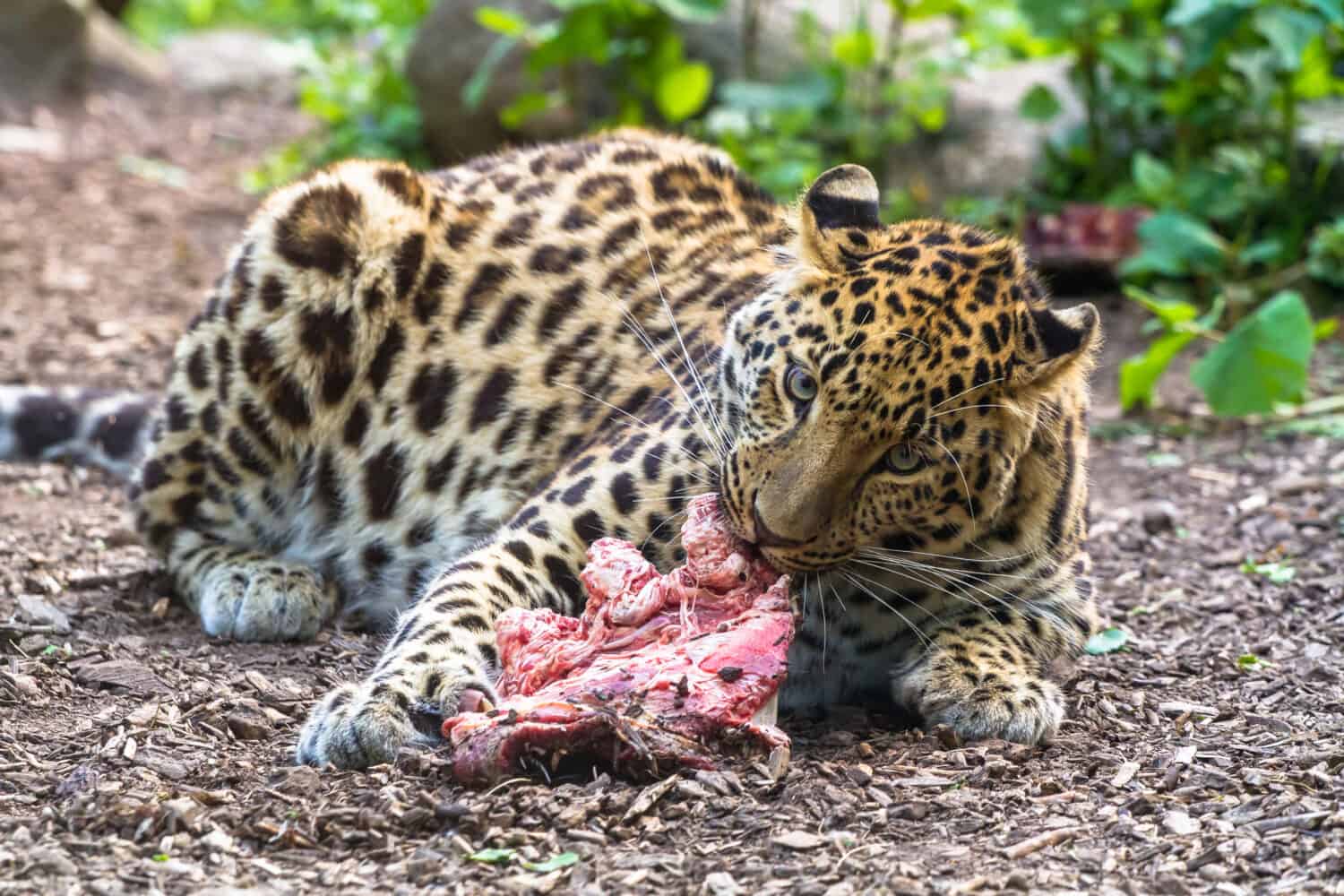
Leopards will eat a large meal and will spend the following few days digesting that food.
©Dmitri Gomon/Shutterstock.com
Survival of the fittest is real and tangible, and not just a phrase we are familiar with. No animal is exempt from the kingdom’s motto, not even a baby animal. Whoever said that the animal world could be cruel knew exactly what they were talking about.
Some predators will even go as far as to eat their kind. It is not uncommon for various animals to even eat their own young. While this may seem barbaric, it is sometimes necessary in the animal kingdom in order to survive.
Simply put, a baby animal is the easiest thing for a leopard to hunt and catch. While a baby would not be a meal for the leopard, it would be a great snack to keep the leopard going.
How Strong Are Warthogs?
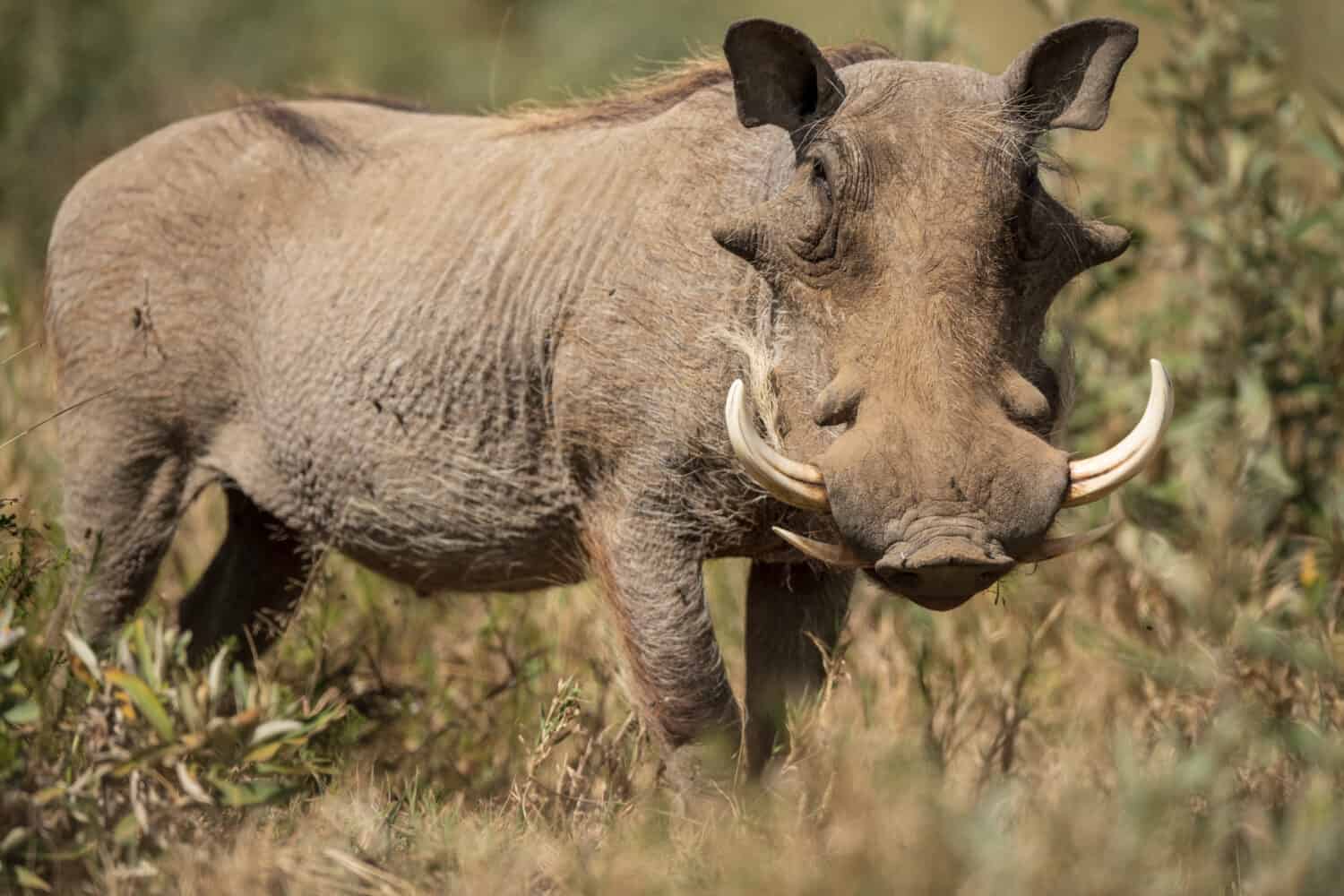
Warthogs have two upper and four to six lower incisors.
©Tao Jiang/Shutterstock.com
Warthogs measure in at 2.9 to 4.9 ft. in length and 2.1 to 2.8 ft. tall at the shoulder. They can also weigh over 300lbs, allowing for a stubby but veracious animal.
Like many animals in the animal kingdom, warthogs have tusks that help them do a variety of daily things like foraging, digging, and the ability to defend themselves in the wild.
The size of the warthog, weight, tusks, and teeth allow the warthog to be a mighty brute force. When faced with the probability of a fight, the warthog will use their tusk and teeth to their advantage to destroy a predator.
As seen from this video, this father warthog would defend his baby with every bit of strength he could muster and charge straight on with no fear of any repercussions.
Is It Normal Behavior For a Warthog to Attack a Leopard?
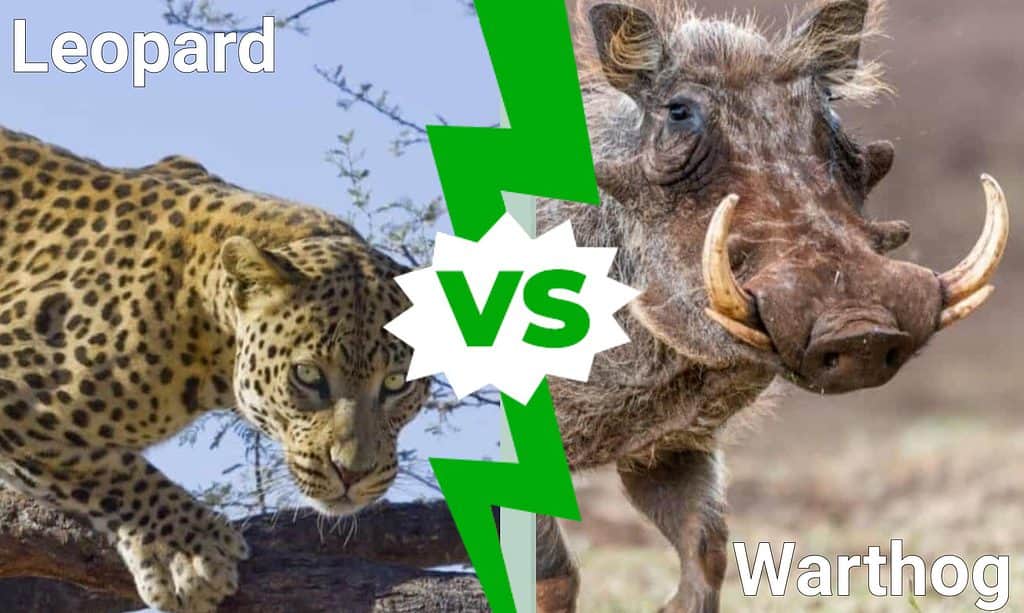
Warthogs are not considered a top predator but they are more than capable of fighting. They are equipped with four sharp tusks, as well as stamina, and can be surprisingly fast. Although they may be qualified to fight, they usually run away from danger. However, when it comes to offspring, both male and female warthogs can be very aggressive and will do just about anything to defend their piglets.
It is normal for a warthog to attack a leopard? They have been known to gore much bigger animals to protect their young. Leopards can be wary of an adult warthog due to the size of its tusks which can easily injure or kill the larger animal. They prefer to prey on smaller animals, like the young piglets.
How Large are Warthogs and Leopards?
Size always plays a role in a standoff between two animals. So how big is each type featured in the video? The average weight of a warthog is between 120 and 250 pounds and height is about 30 inches tall at the shoulder. The males of this species tend to be larger than the females.
How do leopards compare? At an average weight range of 66 to 198 pounds, a length of 3.33 to 6.25 feet, and a height of 1.9 to 2.3 feet, leopards are actually shorter and lighter on average than warthogs. Warthogs are 3 to 4.9 feet long, so leopards have them beat in length.
What Do Warthogs and Leopards Eat?
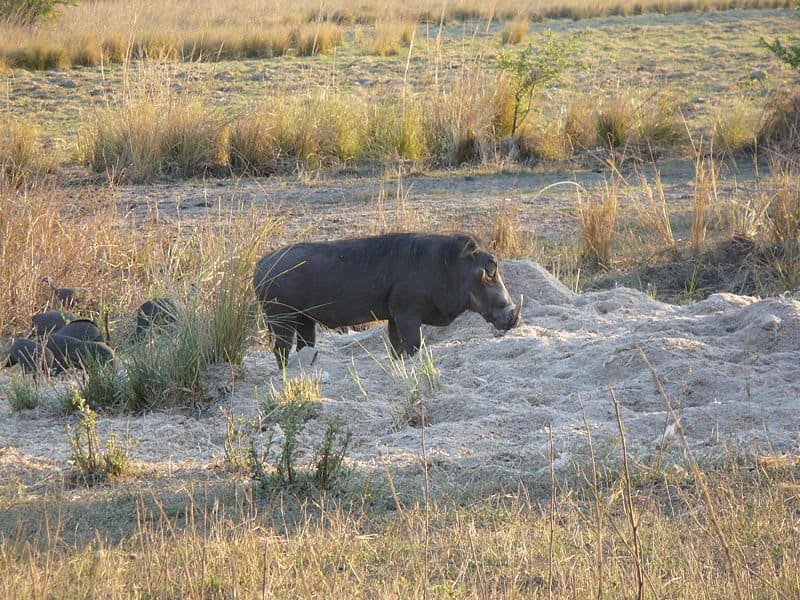
Warthogs are omnivores, but their main diet consists of varied types of vegetation.
©Florence Devouard / CC BY-SA 4.0, via Wikimedia Commons – License
While warthogs are omnivores, their main diet consists of plants, grasses, bulbs, and roots. This diet varies a bit based on what species of warthog you’re referencing–the desert warthog or the common warthog. The common warthog, which inhabits savannas, feeds on berries, grasses, roots, and bark, but will also consume fungi, insects, fruit, eggs, small mammals and reptiles, and carrion.
Desert warthogs can only be found around the Horn of Africa and are less common than the other species. As they live in the desert, their diet is adapted to that environment and is mostly an omnivorous diet. They prefer to forage in groups for plants, grasses, fruits, flowers, bark, tubers, and bulbs. They will also eat insects and carrion and have even been known to consume the dung of other animals.
Meanwhile, leopards are carnivores, solely surviving on a diet of meat. They prey on ungulates like bushbuck, chital, impala, tufted deer, gazelle, eland, springbok, deer, zebra, and antelope. They also target primates such as baboons, gray langur, guenon, and white-eyelid mangabey. Leopards will also target smaller animals like warthogs, hares, guinea fowl, porcupines, fish, and vermin. And finally, other predators like cheetahs, foxes, genets, jackals, young lions, and other leopards are also on their longer list of potential prey.
Thank you for reading! Have some feedback for us? Contact the AZ Animals editorial team.





